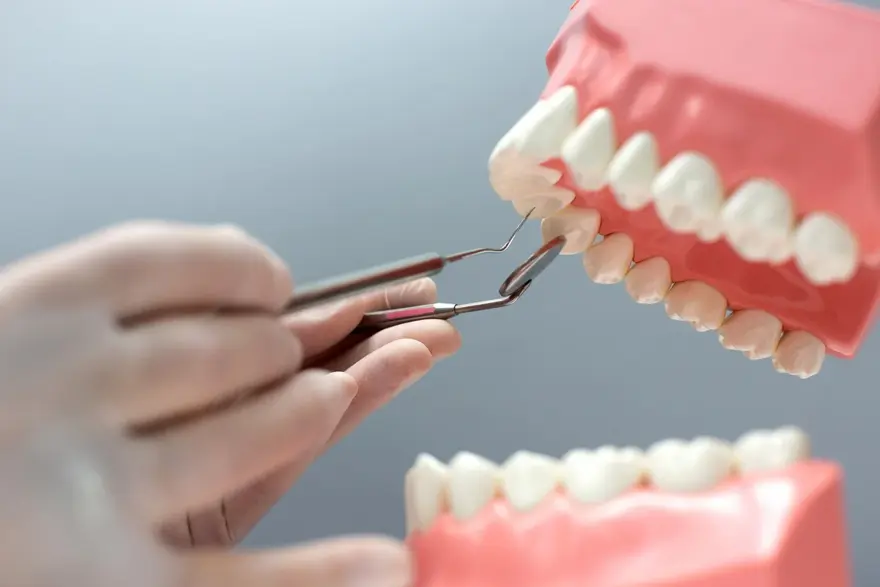Preventive Healthcare
Wisdom Teeth: Function, Location & Anatomy
122 Views
0

What Are Wisdom Teeth?
Wisdom teeth are the third and final set of molars that most people get in their late teens or early twenties. The wisdom teeth location is at the very back of the mouth, behind the second molars. The term "wisdom" is associated with these teeth because they appear at a more mature age compared to other teeth. These teeth are the last to emerge in the mouth, typically between the ages of 17 and 25. While some individuals may never experience issues with their wisdom teeth, others may face complications that require dental intervention.
Function
Historically, wisdom teeth played a crucial role in our ancestors' diets, which often consisted of tough, uncooked foods that required extensive chewing. The additional molars provided enhanced grinding and chewing capabilities. However, with the evolution of softer, cooked diets and advanced dental care, wisdom teeth function has diminished. In modern times, they are often considered vestigial structures.
Why Do We Have Wisdom Teeth?
The presence of wisdom teeth is primarily attributed to evolutionary factors. Our early ancestors needed these extra molars to process their tough, fibrous diets effectively. Additionally, wisdom teeth served as backup teeth in case of tooth loss due to wear, decay, or injury. As human jaws have gradually become smaller over time, the need for these additional teeth has decreased, often leading to complications when they try to emerge in a crowded jaw.
Anatomy
Wisdom teeth are similar in structure to other molars, with a crown and roots. However, wisdom teeth anatomy can vary significantly from person to person. Some wisdom teeth may have multiple roots while others may be fused together. The shape and size of the crown can also differ, with some being more irregularly shaped than others.
Where Are My Wisdom Teeth Located?
Your wisdom teeth are situated at the back of your mouth, behind your second molars. You have two wisdom teeth in the upper jaw (one on each side) and two in the lower jaw, totaling four wisdom teeth.
How Many Wisdom Teeth Do You Have?
Most people have four wisdom teeth, one in each quadrant of the mouth. However, some individuals may have fewer or even no wisdom teeth at all. In rare cases, extra wisdom teeth, known as supernumerary teeth, may be present.
What Do Wisdom Teeth Look Like?
Wisdom teeth resemble other molars in appearance, with a flat chewing surface and multiple cusps (raised points). However, due to limited space in the jaw, they may be smaller or irregularly shaped compared to the other molars. In some cases, wisdom teeth may remain fully or partially embedded in the gum tissue or jawbone.
When Do Wisdom Teeth Come In?
Wisdom teeth ages typically start between 17 and 25. However, this timeline can vary from person to person, and some individuals may experience wisdom teeth eruption earlier or later than this range.
First Signs of Wisdom Teeth Coming In
As wisdom teeth begin to emerge, you may experience symptoms such as swelling, pain, or bleeding in the gums around the eruption site. Some people may also notice a foul taste or discomfort when eating due to a partial eruption.
What Are Some Conditions That Affect Wisdom Teeth?
Common issues associated with wisdom teeth include impaction (when the tooth is blocked from fully emerging), infection, and cyst formation. Impacted wisdom teeth can lead to pain, swelling, and an increased risk of infection due to trapped food particles and bacteria.
What Are Common Treatments For Wisdom Teeth Complications?
The most common treatment for problematic wisdom teeth is surgical removal or extraction. This is especially true for impacted or infected teeth that are causing pain or other dental issues. Regular dental check-ups can help identify potential problems early on, allowing for timely intervention and preventive measures.
How Can I Care For My Wisdom Teeth?
Proper oral hygiene is crucial for maintaining the health of your wisdom teeth. Brush and floss regularly, taking extra care to clean around partially erupted wisdom teeth where food particles can easily become trapped. Schedule regular dental check-ups to monitor the development and health of your wisdom teeth, enabling early detection and treatment of any emerging issues. Your dentist can provide personalised advice based on your unique situation.
FAQ
Do you have to get your wisdom teeth removed?
Not everyone needs a wisdom teeth removal procedure. However, if your wisdom teeth are impacted, causing pain, or contributing to other dental problems, extraction may be recommended.
Can wisdom teeth grow back?
No, once your wisdom teeth are removed, they will not grow back.
Conclusion
Wisdom teeth, while once essential for our ancestors, often present challenges in modern oral health due to evolutionary changes and smaller jaw sizes. By understanding the function, location, and anatomy of wisdom teeth, as well as their potential complications, you can take proactive steps to maintain optimal dental health. If you have concerns about your wisdom teeth or are experiencing symptoms, consult with your dentist for personalised advice and treatment options. At Metropolis Healthcare, our team of skilled professionals is dedicated to providing accurate diagnostic services and personalised care to help you prioritise your oral health.























 WhatsApp
WhatsApp